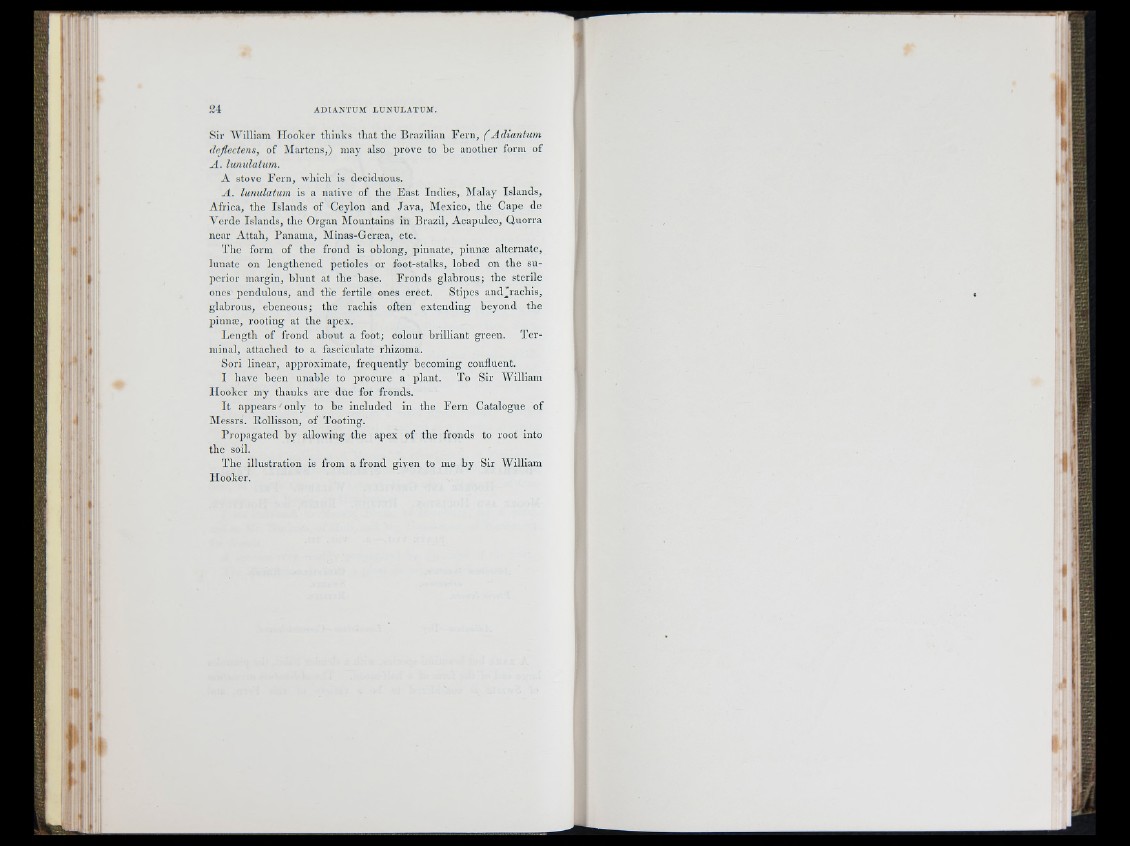
Sir AVllliam Ho o k e r thinks th a t the Brazilian F e rn , ( A d ia n tum
dcflectens, of jMartcns,) may also prove to be another form of
A . lanulatum.
A stove F e rn , which is deciduous.
A . lanulatum is a native of the F a s t In d ie s, Malay Islands,
Africa, th e Islands of Ceylon and Jav a , Mexico, the Cape de
\Y rd e Islands, the Organ Mountains in Brazil, Acapulco, Quo rra
near A ttah , Panama, Minas-Germa, etc.
'J'he form of the frond is oblong, pinnate, pinnsc alternate,
lunate on lengthened petioles or foot-stalks, lobed on th e superior
margin, b lu n t at the base. Fro n d s glabrous; the sterile
ones ¡lendulous, and the fertile ones erect. Stipes an d h 'a ch is,
glabrous, ebeneous; the rachis often extending beyond the
pinuic, rooting at the apex.
L en g th of frond about a foot; colour b rillian t green. T e rminal,
attached to a fasciculate rhizoma.
Sori linear, approximate, freq u en tly becoming confluent.
I have been unable to pro cu re a plant. To Sir William
Ho o k e r my thanks are due for fronds.
I t appears only to be included in the F e rn Catalogue of
Messrs. Rollisson, of Tooting.
P ro p ag a ted by allowing the apex of the fronds to root into
the soil.
T h e illustration is from a frond given to me b y Sir William
Hooker.